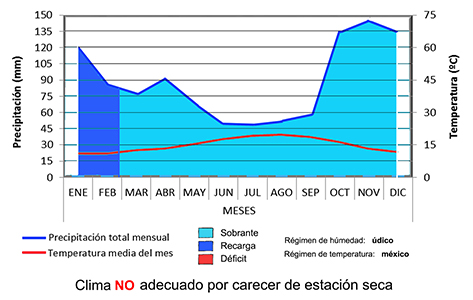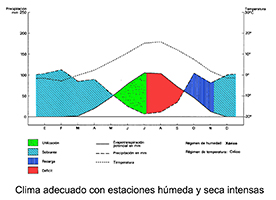

Clay illuviation and formative factors
From the very genesis of this process, it can be deduced that in order for it to take place, it is absolutely essential that the soil experiences sufficiently intensely humid periods for an excess of gravity water to filter through the soil. If this were not the case, the clay would not be dragged down with it. Similarly, it is usually necessary for the soil to experience dry periods that are long enough and intense enough for the macropores of the lower soil horizons to be totally desiccated. For this reason, this process does not occur (or only rarely) in constantly wet climates, as the clay suspensions that filter through the soil are not submitted to intense suction by the micropores as these are always wet. The clay is therefore not retained in appreciable quantities (unless flocculation occurs for physico-chemical reasons) and is thus eliminated to the subsoil. Hence, in these cases, the normal process is of clay eluviation but not illuviation.
Apart from climatic characteristics, this process requires other conditions in order to occur. The parent material must have a sufficiently high clay content, the soil must be porous enough to allow the suspensions to circulate freely and, given that this is a slow process, the surfaces which support soils with intense illuviation must be geomorphologically stable and sufficiently old.